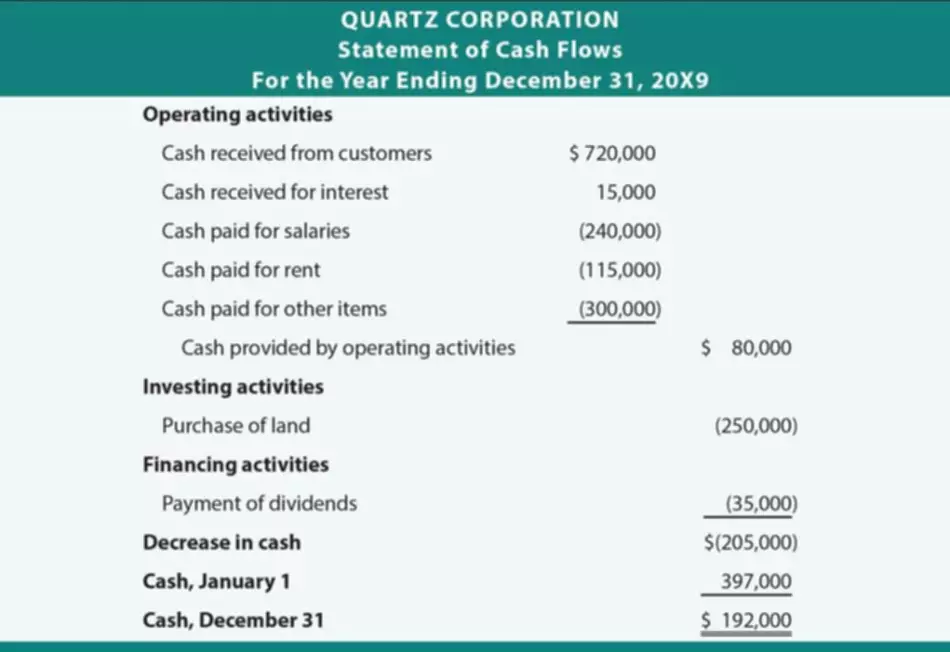07 Dec Horizontal Analysis Overview, Key Metrics, Example
Content

With metrics like the cash flow to debt ratio, coverage ratios, interest coverage ratio, and other financial ratios, the horizontal analysis can determine whether sufficient liquidity can service the company. It can also be used to compare growth rates and profitability over a period of time, across companies in the same industry.

Horizontal analysis can be performed by comparing a recent year against the base year while identifying the growth trends between the time periods. The analysis can be performed in any four types of financial statement i.e. income statement, balance sheet, statement of cash flow, and statement of changes in equity. However, income statement and balance sheet are mostly used financial statement to do horizontal analysis . Financial statement analysis can be used to evaluate a company’s liquidity, solvency, profitability, and overall financial position. Analyzing a company’s financial statements investors and comparing company performance with other companies in the same industry helps analysts to make informed decisions about whether or not to invest in the company.
Ratios: Balance Sheet and Horizontal Analysis Essay
The accounting period covered could be one-month, a quarter, or a full fiscal year. These give the analyst insight into how much the line-item value has changed from the base period to the period being analyzed. Retained earnings went up by 16.70% and shareholders’ equity increased by 14.59%. Horizontal analysis shows a company’s growth and financial horizontal analysis formula position versus competitors. If the base year is zero or negative, the trend percentage calculated will not be meaningful. Calculate the amount of the increase/ for the period by subtracting the earlier year from the later year. If the difference is negative, the change is a decrease and if the difference is positive, it is an increase.
- Also, when an analysis is presented on a repetitive basis over many reporting periods, any changes in the comparison periods should be disclosed, to make readers aware of the difference.
- Finally, this technique involves preparation of Comparative Balance Sheet and Comparative Income Statement so as to highlight the changes in the various assets, liabilities, income and expenditure.
- This online calculator can be used to know the percentage change year over year (Y-o-Y) in net sales of your business.
- Horizontal analysis is a process used to analyzed financial statements by comparing the specific financial information for a particular accounting period with information from another period.
- It can be performed on any financial data that has been recorded over time.
This analysis helped companies to fix their goals and also helpful for the shareholders to highlight the weakness of the business programs and to find the way for their improvement. The horizontal analysis is conducted on both the balance sheet and profit/ loss account. This means that some organizations maneuver the growth and profitability trends reported in the analysis with a https://www.bookstime.com/ combination of methods to break down business segments. Even so, one-off events and accounting changes can be implemented to correct these anomalies to improve the accuracy of the analysis. The fastest way to see trends is to look at the changes from period to period. But, if you need more detailed analysis, you’ll want to view variances – either as percentages or dollar amounts.
Vertical Analysis of Balance Sheet ↑
A useful way to analyze these financial statements is by performing both a vertical analysis and a horizontal analysis. This type of analysis allows companies of varying sizes whose dollar amounts are vastly different to be compared. A closer look into vertical analysis in fig shows the distribution pattern of liabilities among current liabilities, long – terms liabilities and equity capital. Similarly, it shows the distribution pattern of total asserts among current asserts, fixed assets and other asserts. For example, a company’s management may establish that the robust growth of revenues or the decline of the cost of goods sold as the cause for rising earnings per share. By exploring coverage ratios, interest coverage ratio, and cash flow-to-debt ratio, horizontal analysis can establish whether sufficient liquidity can service a company.
Horizontal Analysis in Reporting Standards The Generally Accepted Accounting Principles define a financial analysis approach that lets you compare different data sets over a given accounting period to spot trends and patterns. Horizontal analysis is one of the most fundamental analyses of historical financial information that you can perform. In this analysis, the analyst always compares the financial statement of the business for more than two accounting periods. This is data are arranged in side by side columns on a yearly basis. Horizontal analysis is a financial statement analysis technique that shows changes in the amounts of corresponding financial statement items over a period of time.
AccountingTools
For example, although a large percentage change occurred in Prepaid Expenses, the analyst would scarcely notice this item in an initial examination of changes. A horizontal analysis is used to see if any numbers are unusually high or low in comparison to the information for bracketing periods, which may then trigger a detailed investigation of the reason for the difference. It can also be used to project the amounts of various line items into the future. Horizontal analysis is an approach used to analyze financial statements by comparing specific financial information for a certain accounting period with information from other periods. The primary difference between vertical analysis and horizontal analysis is that vertical analysis is focused on the relationships between the numbers in a single reporting period, or one moment in time. Horizontal analysis looks at certain line items, ratios, or factors over several periods to determine the extent of changes and their trends.
Application of microtomography and petrography techniques for the characterization of porosity of synthetic carbonatic rock minerals before and after acidification processes Scientific Reports – Nature.com
Application of microtomography and petrography techniques for the characterization of porosity of synthetic carbonatic rock minerals before and after acidification processes Scientific Reports.
Posted: Tue, 11 Oct 2022 14:23:08 GMT [source]
For that reason, the amount of capital needed on hand to fund day-to-day working capital needs and capital expenditures , i.e. the purchase of long-term fixed assets, varies widely across each industry. Long story short, the “common size” financial statements are only informative if the companies being compared as similar in nature, such as the business model, target customer profile, end markets served, etc. Horizontal Analysis measures a company’s operating performance by comparing its reported financial statements, i.e. the income statement and balance sheet, to the financial results filed in the base period. To conduct a horizontal analysis of Goldman Sachs’ 2021 performance compared to 2020, first subtract the line items for the base year of 2020 from those for the target year of 2021.
What is financial statement analysis?
Horizontal analysis is used by companies to see what has been the factors to drive the company’s financial performance over a number of years (Aizenman & Marion, 2004). (Miller & Goidel, 2009) Like in Nepal as well, the demand/sell of clothes and other appliances is higher during special festivals or occasions compared to other normal days. It allows the company to have a detailed look at each of the line item. They can even have a complete picture of an operational result by analyzing financial statement, balance sheet, and cash flow statement at the same time. With it, the company can assess its profitability and operational efficiency while also looking at what has been driving the company’s performance. For instance, if management establishes the revenue increase or decrease in the cost of goods sold is the reason for rising earnings per share, the horizontal analysis can confirm.
- Although there is increase in liabilities and provision, investments in made in fixed assets and other assets have increased showing a good balance in the company statement.
- Even so, one-off events and accounting changes can be implemented to correct these anomalies to improve the accuracy of the analysis.
- It also shows the impact of each line item on the overall revenue, cash flow or asset figures for your company.
- The team holds expertise in the well-established payment schemes such as UK Direct Debit, the European SEPA scheme, and the US ACH scheme, as well as in schemes operating in Scandinavia, Australia, and New Zealand.
- Vertical analysis is most helpful in examining changes in percentages.
- It is used in the review of company financial statements over multiple periods.
- In particular, the specific metrics and any notable patterns or trends that were identified can be compared across different companies — ideally close competitors operating in the same industry — to evaluate each finding in more detail.
Different financial documents will have different relevant base figures. Form the table above we can understand that there was no change in the share capital but the reserve and surplus was increased by 44%. Other liabilities increased by 38%, liquidity increased by 18%, investment, net fixed asset and other assets by 18%, 56% and 15% respectively.
On the other hand, total current liabilities, common stock, total current assets and cash has increased value. This indicates the company is performing well but it should use the cash in settling the current liabilities or invest it to maximize the return. Horizontal analysis, or trend analysis, is a method where financial statements are compared to reveal financial performance over a specific period of time. Use it to spot trends in your business.Horizontal analysis, also known as trend analysis, is used to spot financial trends over a specific number of accounting periods. Horizontal analysis can be used with an income statement or a balance sheet.
- For example, an analysis of the last two quarters might look great, but when compared with the same period in the last year, it might look terrible.
- For example, a horizontal analysis of the cost of insurance might list the cost on a quarterly basis for the past few years, while a vertical analysis would present it as a percentage of sales only for the current period.
- The Horizontal Analysis Formula is a very useful tool for comparing different years and understanding how a company is performing.
- For example, although a large percentage change occurred in Prepaid Expenses, the analyst would scarcely notice this item in an initial examination of changes.
- Whether you perform this analysis every fiscal year or every quarter, the information it provides is well worth the time and effort required.
- A trend percentage of less than 100.0% means the balance has decreased below the base year level in that particular year.
- All items on the balance sheet and income statement for the year 2008 have been compared with the items of balance sheet and income statement for the year 2007.
Likewise, we can do the same for all the other entries in the income statement. As we see, we can correctly identify the trends and develop relevant areas to target for further analysis. You do not need special financial skills to ascertain the difference between previous and last year’s data. However, it would be best if you had diligence, attention to detail, and a logical mind to decipher why the change happens. The overall growth has been relatively higher in the year 2018 compared to that of the year 2017. Nevertheless, it indicates that the company has witnessed continuous growth in the last two years.
Horizontal Analysis: What It Is vs. Vertical Analysis
Again, it is important to look at the footnotes in the statement to determine if this is the case. Tammy teaches business courses at the post-secondary and secondary level and has a master’s of business administration in finance. Pick a base year, and compare the dollar and percent change to subsequent years with the base year. First, we noted that Colgate had not provided segmental information in the income statement.


No Comments